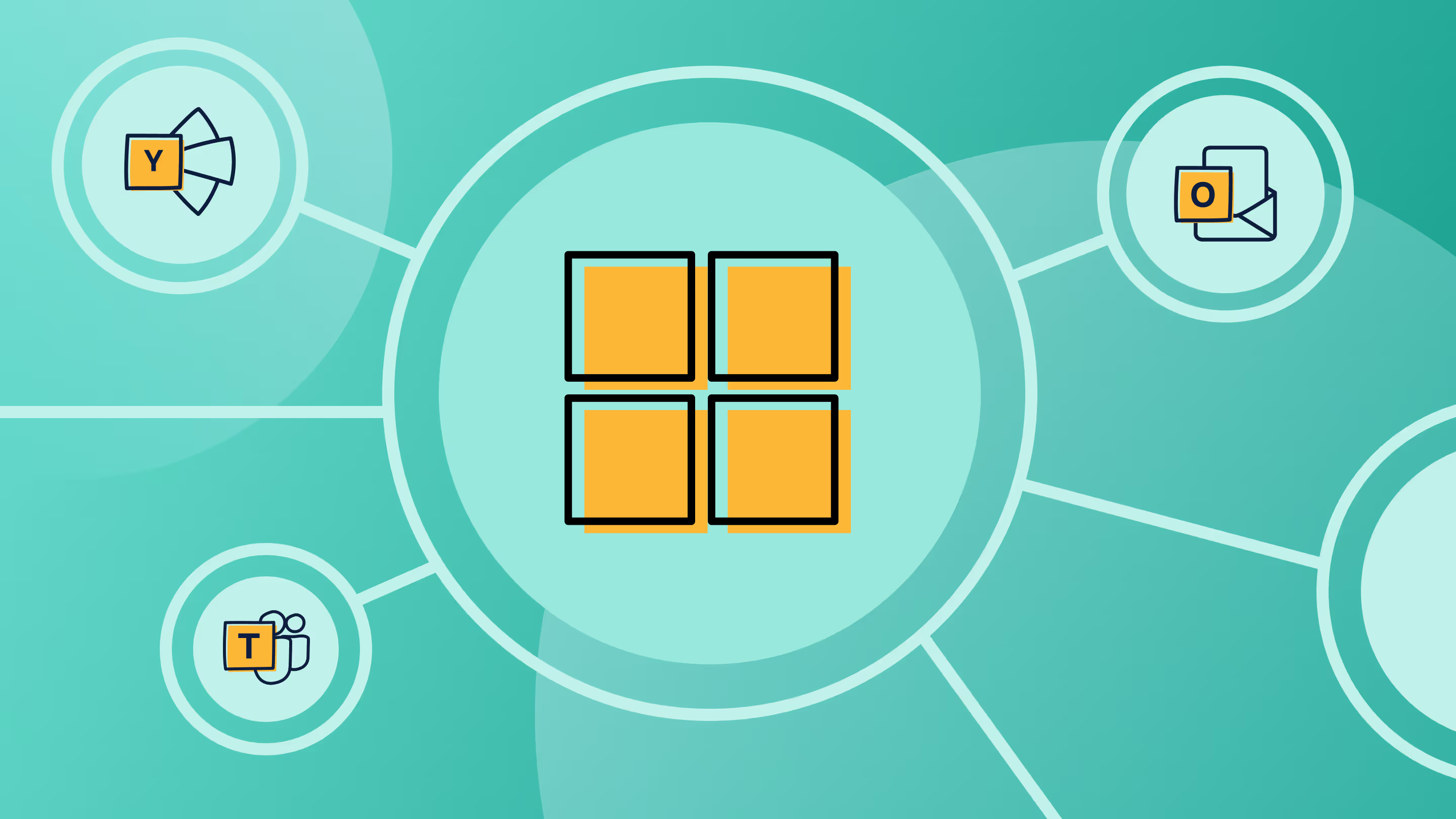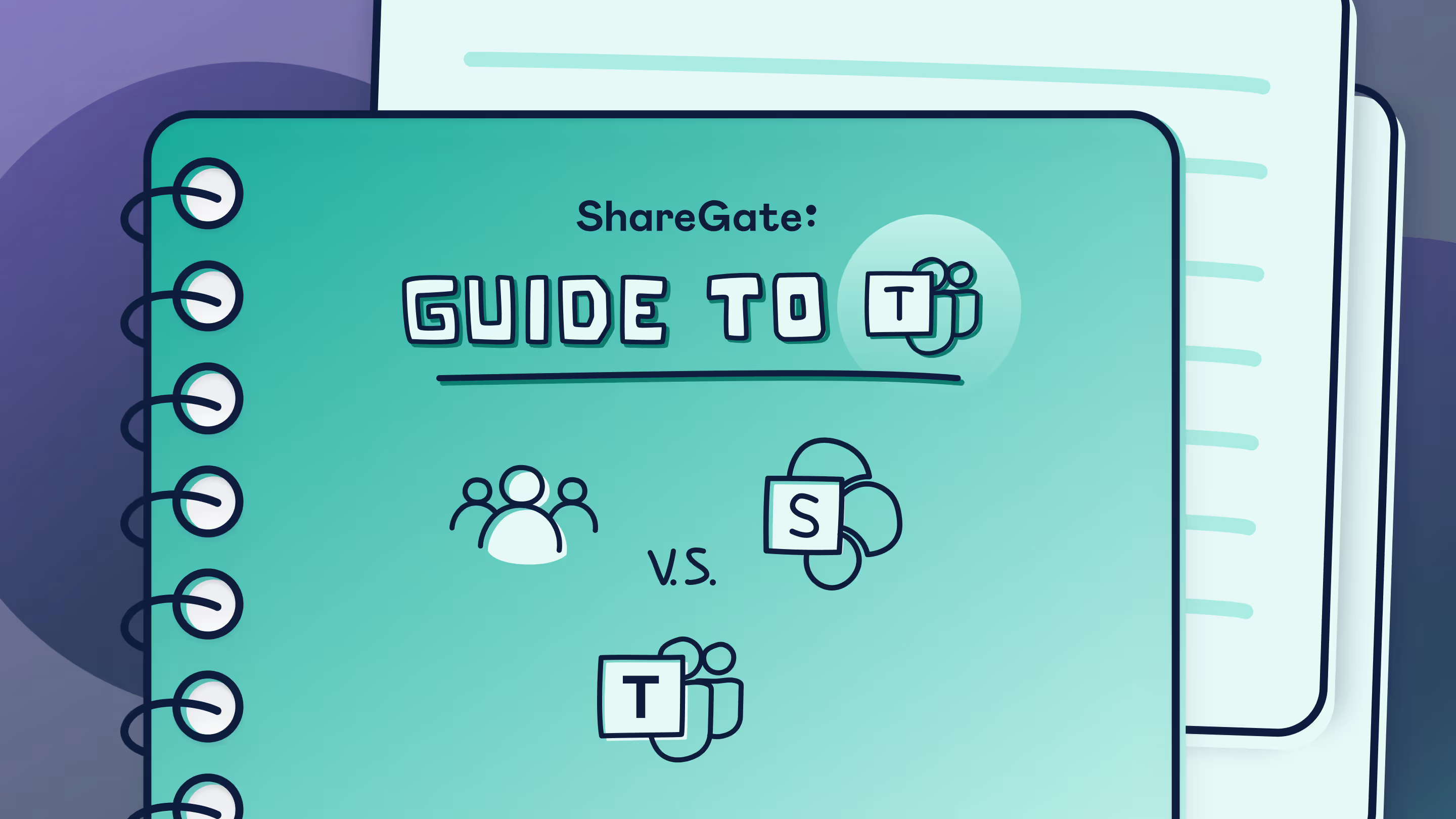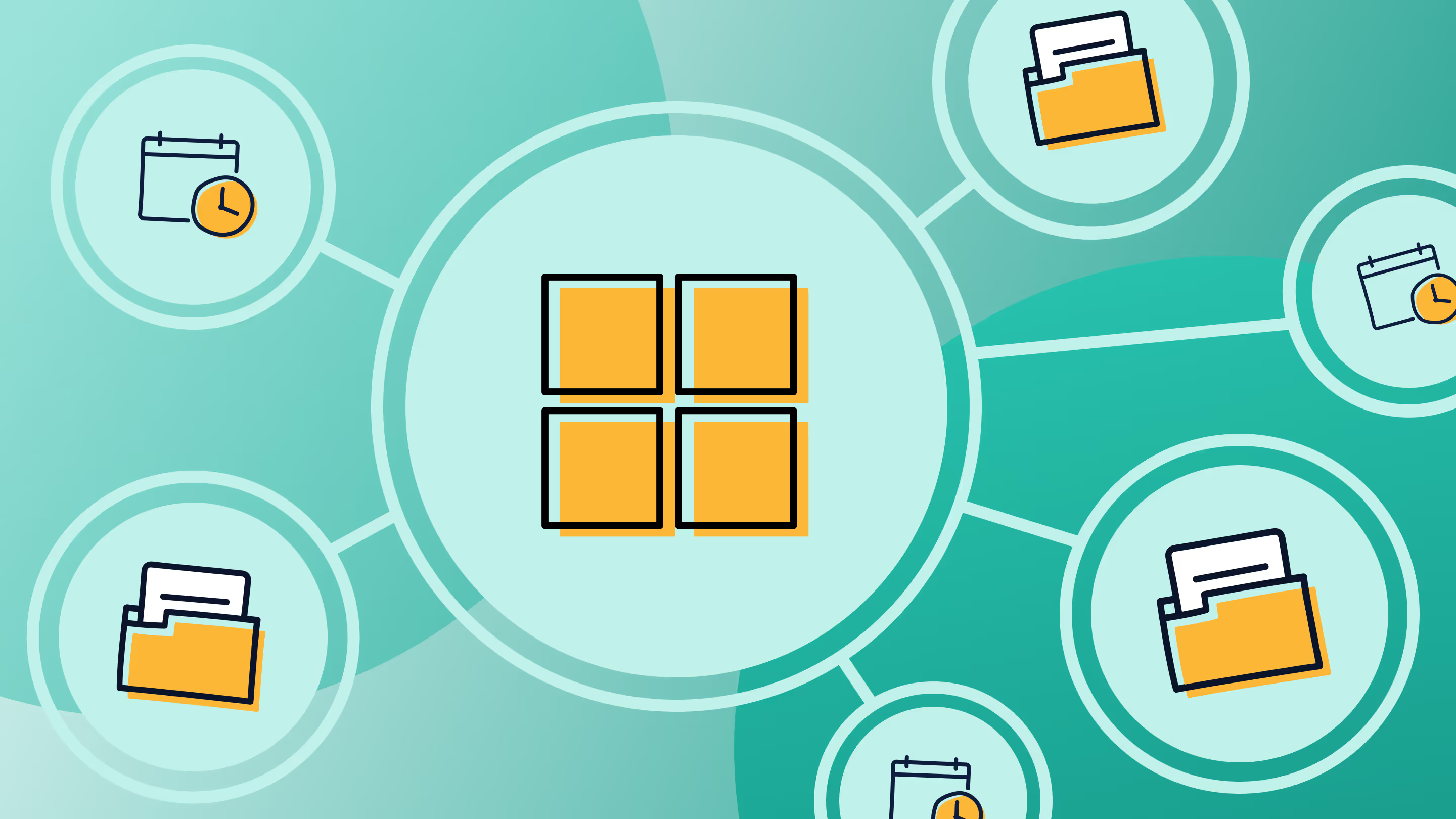Everything you need to know about Microsoft Groups

Table of contents
Microsoft 365 keeps getting more powerful, with a key emphasis on collaboration. That's where Microsoft Groups come in!
Groups act like a central hub, bringing membership and access to various M365 tools under one roof. You can expect to work with Groups more and more, as it is the main cross-application membership service for all of the integrated products in Microsoft 365.
That’s why we created the following series of articles to guide you through everything you need to know about Microsoft Groups.
Everything you need to know about using Microsoft Groups effectively
Using Microsoft Groups effectively requires one to understand what Microsoft Groups are and what they have to offer.
Microsoft 365 Groups is a cross-application membership service in Microsoft 365. Each Microsoft Group lives in Microsoft Entra ID (formerly Azure Active Directory), has a list of members, and is attached to that Group’s related Microsoft 365 workloads, including a SharePoint team site, Exchange mailbox, Planner, Power BI, OneNote, and, optionally, a team in Microsoft Teams.
Here's a breakdown of what Microsoft Groups offer:
- Centralized collaboration: Groups streamline teamwork by providing a shared workspace with features like a SharePoint site, OneNote notebook, and a Planner board. Everyone has easy access to project information and can work together seamlessly.
- Simplified membership management: Microsoft Groups free you from the hassle of managing permissions for individual applications. When you add someone to a Group, they automatically receive the access level they need for the Microsoft 365 tools included.
- Seamless communication: Microsoft Groups integrates with Microsoft Teams, fostering smooth communication within your team. They include features like chat channels, document co-authoring, and threaded conversations to keep everyone informed.
- Improved efficiency: Microsoft Groups centralize resources and communication to eliminate the need to switch between different applications and search for scattered information. It also increases the productivity of your team.
Why are Microsoft 365 Groups a game changer?
So, what’s the big deal then? Why is everyone talking about Microsoft 365 Groups now?
Well, it’s very simple. When a Microsoft 365 group is created, there are little robots, all behind the scenes, that automatically create a workspace attached to that group, in the various Microsoft products.
When that group is created in Microsoft Entra ID, the robots, or provisioning service, if you will, start knocking on each of the products’ doors.
- Provisioning robot: “Hey, Exchange, what would you give for this group of people?”
- Exchange: “Here’s a Mailbox; it comes with an email address for the group to send and receive emails, as well as a calendar.”
- Provisioning robot: “Hey, SharePoint, do you have something for this group?”
- SharePoint: “Sure! I can give you a team site.”
- Provisioning robot: “I know you’re new here, Microsoft Teams, but what would you give this group?”
- Teams: “I can give them a team; it’s a chatroom within which they can create channels for live chat.”
And the story continues with Planner and Power BI.
Microsoft 365 Groups is not a product, nor does it compete with others. It’s just like your security groups but with a provisioning robot and a sense of centralized management.
We cover management and governance of Microsoft 365 Groups later in the series, but here are a few important things to keep in mind:
So, what’s the big deal then? Why is everyone talking about Microsoft 365 Groups now?
Well, it’s very simple. When a Microsoft 365 group is created, there are little robots, all behind the scenes, that automatically create a workspace attached to that group, in the various Microsoft products.
When that group is created in Microsoft Entra ID, the robots, or provisioning service, if you will, start knocking on each of the products’ doors.
- Provisioning robot: “Hey, Exchange, what would you give for this group of people?”
- Exchange: “Here’s a Mailbox; it comes with an email address for the group to send and receive emails, as well as a calendar.”
- Provisioning robot: “Hey, SharePoint, do you have something for this group?”
- SharePoint: “Sure! I can give you a team site.”
- Provisioning robot: “I know you’re new here, Microsoft Teams, but what would you give this group?”
- Teams: “I can give them a team; it’s a chatroom within which they can create channels for live chat.”
And the story continues with Planner and Power BI.
Microsoft 365 Groups is not a product, nor does it compete with others. It’s just like your security groups but with a provisioning robot and a sense of centralized management.
We cover management and governance of Microsoft 365 Groups later in the series, but here are a few important things to keep in mind:
- By default, anyone in your organization can create Microsoft 365 groups. However, IT admins can restrict this functionality.
- There are various ways to restrict and manage self-service creation for Microsoft 365 groups.
- A group gets created automatically when you do the following in these products:
- Planner: Create a new plan
- SharePoint: Create a new site collection
- Outlook: Create a new group
- Teams: Create a new team
- Each group can have up to 100 owners and more than 1000 members/subscribers (only 1000 can access the group conversations)
- External members are called guests and are not the same as external users in SharePoint
- Groups can be private or public, although private does not mean hidden
Understanding group permissions
Microsoft Groups automatically assign permissions based on a member's role, making managing access easy and keeping things organized. Here's a quick rundown of who gets what:
- Group owners: These are the real bosses of the Group. They can add and remove group members, adjust settings, and even disband the group entirely.
- Members: These are the individuals with access to the Group. They can access all the group resources, including the SharePoint site, OneNote notebook, Planner board, and other connected tools.
Microsoft Groups automatically assign permissions based on a member's role, making managing access easy and keeping things organized. Here's a quick rundown of who gets what:
- Group owners: These are the real bosses of the Group. They can add and remove group members, adjust settings, and even disband the group entirely.
- Members: These are the individuals with access to the Group. They can access all the group resources, including the SharePoint site, OneNote notebook, Planner board, and other connected tools.
- Guests: Guests can be invited to collaborate on projects even if they don't have a Microsoft 365 account within your organization. The group owner controls guest permissions, which can be limited to specific tools or functionalities to ensure they have the necessary access without giving them full control.
Microsoft 365 Groups vs security groups: Key differences
Microsoft 365 Groups facilitate collaboration by providing a central workspace with integrated tools, including SharePoint, OneNote, and Planner. They are ideal for project teams, departments, or a set of individuals requiring a shared communication and collaboration environment.
Microsoft security groups grant granular access control to specific resources within Microsoft 365, such as files, folders, or applications. They should be used when access control is the primary objective, not collaborative features like shared workspaces.
The key difference is their primary functions: Microsoft 365 Groups enhance collaboration, while security groups focus on access control and security management.
When to use Microsoft 365 Groups vs security groups
Microsoft 365 Groups can be used when you need people to work together on projects, share files, and communicate. They act like a central workspace with features like a shared mailbox, SharePoint site, and Planner.
Security groups, on the other hand, focus on access controls. You can use them to grant users or devices permission to access specific resources within Microsoft 365, such as SharePoint sites or Teams. Security groups are a more straightforward way to manage access control than adding users individually.
How to create a Microsoft 365 group in the admin center
Users can create a Microsoft 365 group from Outlook or other apps if they enable self-service group creation. But as an admin, if you need to create or delete groups, add or remove members, or customize how they work, the Microsoft 365 admin center is the place to do it.
To create a Microsoft 365 group:
1. In the Microsoft 365 admin center, go to the Active Groups page (underneath “Groups” in the left-hand navigation) and select Add a group.
2. On the “Group type” page, select Microsoft 365, then click Next
3. Choose a name for the group and, if you’d like to, enter a description. Then click Next.
4. Enter the names of at least one person who will be the group's owner (we recommend assigning at least two owners to avoid having an orphaned group). Click Next.
5. Enter a unique email address for the group and select a privacy option (public or private). You can also choose whether or not to add an associated Microsoft Teams team to your group. Then click Next.
6. Review all your settings, make any changes, and select Create Group.
How to add members (and owners) to a Microsoft 365 group in the admin center
Once the group has been created, you can add members and owners and configure additional settings.
Once a new group appears on the Active Groups page, you can add users to it from the Microsoft 365 admin center.
To add members (or owners) to a Microsoft 365 group, you must:
- Select the group name from the list. Under the Members tab, select View All and Manage Members (or View All and Manage Owners to add or change group owners).
- Select Add members (or Add owners), choose the users you want to add, and then click Save Changes.
The group should appear in Outlook with all members (and owners) assigned to it.
Check out our documentation for more details on understanding the relationship between Microsoft Teams, Microsoft 365 Groups, and other Microsoft services, such as SharePoint sites.
Managing your groups with Microsoft Teams
Microsoft Teams works hand-in-hand with M365 Groups. This means you can manage your groups directly within Teams, which is probably already where your team chats and works together. In Teams, you can add or remove people from your group, control who can see what, and keep everything organized in one place.
Instead of jumping between different apps, you can easily add or remove people from your group and assign ownership directly within Microsoft Teams. You can also control who can see what within channels and folders in the group. If you need more detailed control over permissions, you can access the original SharePoint site connected to your group.
So there you have it! Microsoft 365 Groups bring your team's tools and chats together in one place, making teamwork a breeze. This guide should help you get started using Groups for your projects.
Now you've got the basics of Microsoft 365 Groups. Still, have some questions? No worries, we've got answers to some common Group queries below. Let's check them out!
Q: What are Microsoft 365 Groups all about?
A: Microsoft 365 Groups are like your online team HQ. They bring all the tools you and your coworkers need together in one place. This makes working on projects and staying in touch super easy.
Q: What kind of stuff can I use Groups for?
A: Groups are great for all sorts of things, from planning projects and keeping your department connected to working with clients and collaborating across different teams in your company.
Q: Can I work with people outside my company in a Group?
A: Absolutely! You can invite people who aren't part of your company (guests) to join your Group and work on things together, even if they don't have a Microsoft 365 account. You control what they can see and do within the Group.
Q: What happens if the person who created the Group leaves the company?
A: It's a good idea to have at least two people set as owners of a Group. That way, if the original owner leaves, the Group won't be left hanging. Other owners or the IT folks in your company can still manage the Group and make sure someone new is in charge.
Q: What if my Group isn't being used anymore? Can I get rid of it?
A: Instead of deleting it, you can archive your Group. This basically puts it on hold, and nobody can change anything, but all the information is still there if you need it later.
Table of contents
.jpg)


.svg)
%20(1).avif)












.jpg)


.png)

